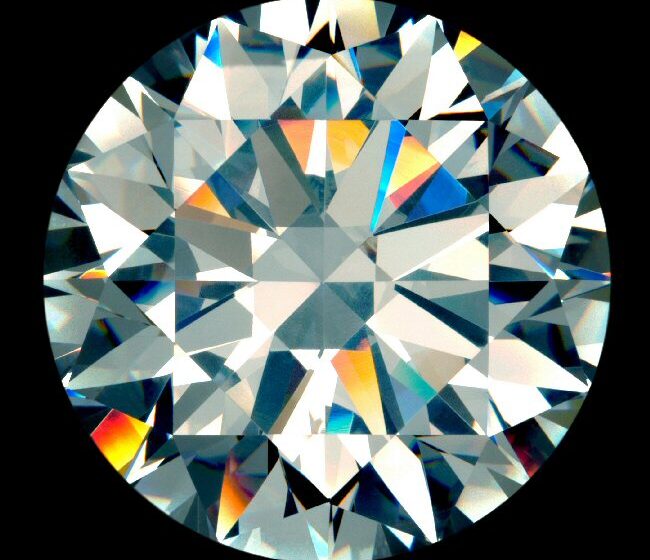When choosing a gemstone for jewelry, it’s essential to understand the characteristics of each option available. Among the most common alternatives to natural gemstones, cubic zirconia gemstone and glass gemstone are two widely recognized materials. But how do they compare? Let’s dive into their properties, uses, and key differences to help you make an informed decision.
What Is a Cubic Zirconia Gemstone?
Cubic zirconia, often abbreviated as CZ, is a synthetic gemstone that mimics the appearance of a diamond. Created in a laboratory, cubic zirconia is composed of zirconium dioxide. Its clarity, brilliance, and affordability make it a popular choice for fine jewelry, particularly as a diamond substitute.
Features of Cubic Zirconia
- Brilliance and Fire: Cubic zirconia exhibits remarkable brilliance and fire, comparable to a diamond. It refracts light efficiently, giving it a stunning sparkle.
- Hardness: With a Mohs hardness rating of 8 to 8.5, cubic zirconia is highly durable and resistant to scratches.
- Clarity: Most cubic zirconia gemstones are flawless because they are created under controlled conditions.
- Color Variations: While cubic zirconia is often colorless, it can be manufactured in a variety of colors, mimicking other gemstones.
- Affordability: Cubic zirconia is significantly more affordable than natural diamonds or gemstones, making it accessible to a broader audience.
What Is a Glass Gemstone?
Glass gemstones, as the name suggests, are created from glass materials. These synthetic stones are often used as imitation gems and can be designed to resemble various natural gemstones, including diamonds, rubies, and sapphires.
Features of Glass Gemstones
- Appearance: Glass gemstones can look similar to natural stones, but their brilliance and clarity are generally less pronounced than cubic zirconia.
- Hardness: Glass gemstones have a lower hardness, typically ranging from 5 to 6 on the Mohs scale. This makes them more prone to scratches and damage.
- Cost: Like cubic zirconia, glass gemstones are an affordable alternative to natural gems. However, their lower durability often limits their use in high-end jewelry.
- Versatility: Glass gemstones can be produced in a wide range of colors and shapes, making them suitable for costume jewelry and decorative items.
How Do Cubic Zirconia and Glass Gemstones Compare?
Appearance and Brilliance
Cubic zirconia gemstones are renowned for their brilliance and fire, which closely resemble that of a diamond. Glass gemstones, on the other hand, lack the same level of sparkle. If a radiant and eye-catching appearance is your priority, cubic zirconia is the better choice.
Durability
The higher hardness rating of cubic zirconia gives it an advantage in terms of durability. Jewelry made with cubic zirconia gemstones can withstand daily wear and tear, whereas glass gemstones are more susceptible to scratches and chips.
Weight
Cubic zirconia is denser than glass, which means it feels heavier. This weight difference can be noticeable, particularly in larger pieces of jewelry.
Cost-Effectiveness
Both cubic zirconia and glass gemstone are budget-friendly alternatives to natural gemstones. However, cubic zirconia offers better value due to its superior durability and brilliance.
Use in Jewelry
Cubic zirconia gemstones are frequently used in fine jewelry, including engagement rings, necklaces, and earrings. Glass gemstones are more common in costume jewelry and fashion accessories due to their lower durability and brilliance.
Why Choose Cubic Zirconia Gemstone Over Glass Gemstone?
- Superior Quality: Cubic zirconia gemstones offer better clarity, sparkle, and durability compared to glass gemstones.
- Longer Lifespan: Thanks to their higher hardness, cubic zirconia gemstones last longer and maintain their appearance over time.
- Versatility in Design: Whether you’re looking for a classic solitaire ring or a vibrant statement piece, cubic zirconia gemstones can be crafted into various designs.
- Ideal for Everyday Wear: Cubic zirconia’s durability makes it suitable for everyday wear, unlike glass gemstones, which are more delicate.
Are There Any Downsides to Cubic Zirconia?
While cubic zirconia gemstones have many advantages, there are a few considerations to keep in mind:
- Less Prestige: Because cubic zirconia is a synthetic material, it lacks the prestige and value associated with natural gemstones.
- Softer Than Diamonds: Although durable, cubic zirconia is not as hard as natural diamonds and may show signs of wear over time.
- Perceptible Differences: Under close inspection, cubic zirconia may appear less “lifelike” than natural diamonds.
How to Care for Cubic Zirconia and Glass Gemstones
Proper care ensures the longevity and brilliance of your gemstones. Here are some tips:
For Cubic Zirconia Gemstones
- Clean regularly with a soft cloth and mild soap.
- Avoid harsh chemicals and abrasive materials.
- Store in a separate compartment to prevent scratches.
For Glass Gemstones
- Handle with care to avoid chips or cracks.
- Clean gently with a damp cloth.
- Store in protective cases to minimize the risk of damage.
Which Is Better for You: Cubic Zirconia or Glass Gemstone?
The choice between cubic zirconia and glass gemstones depends on your needs, preferences, and budget. If you’re looking for a durable, brilliant, and affordable alternative to diamonds, cubic zirconia gemstones are the superior choice. For decorative or temporary pieces, glass gemstones can be a cost-effective option.
In summary, cubic zirconia gemstones outshine glass gemstones in terms of brilliance, durability, and versatility. They are an excellent choice for fine jewelry, ensuring your accessories remain radiant and beautiful for years to come.


